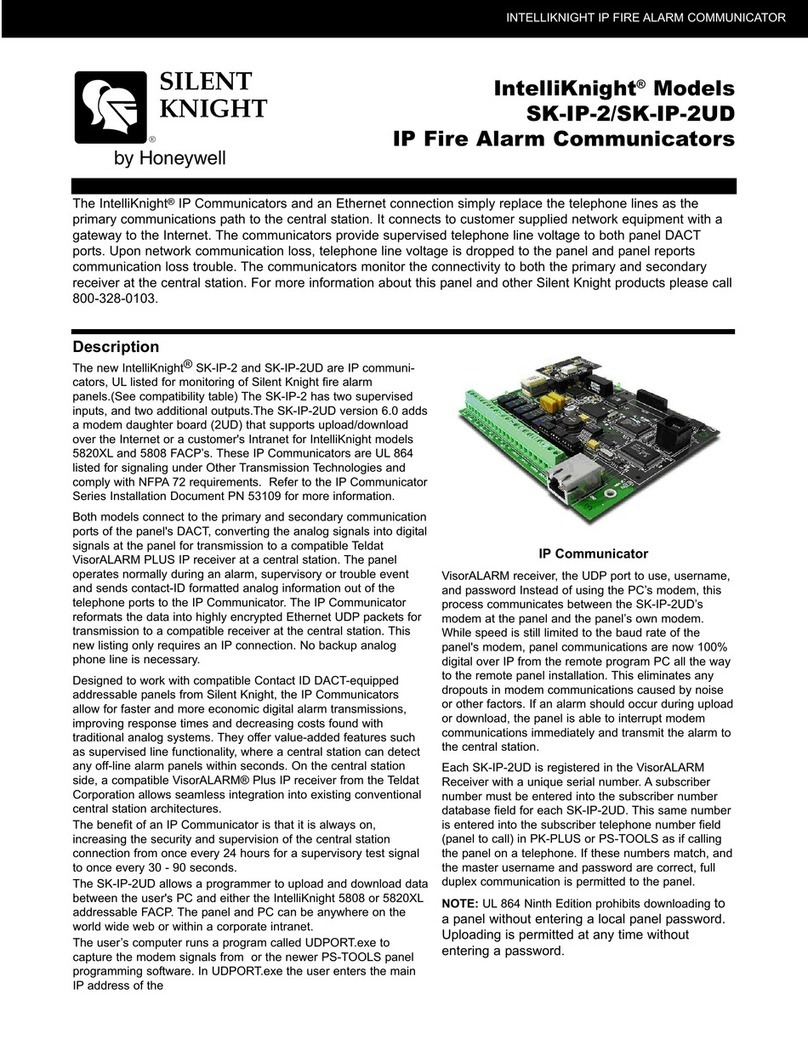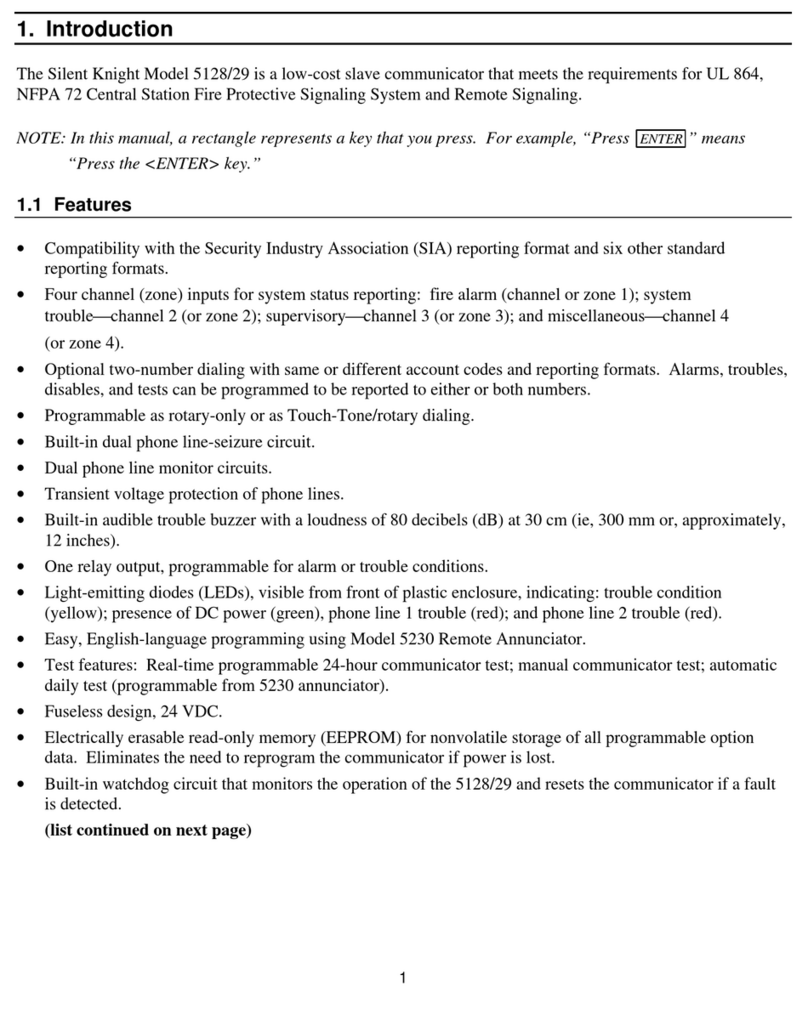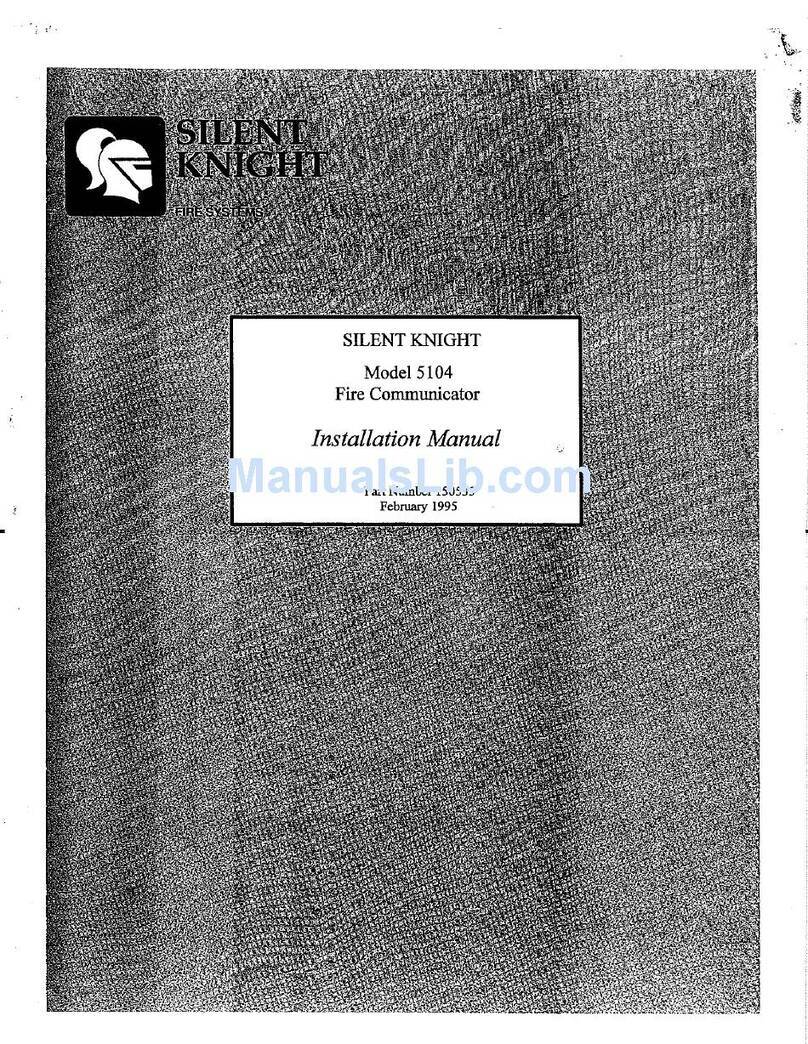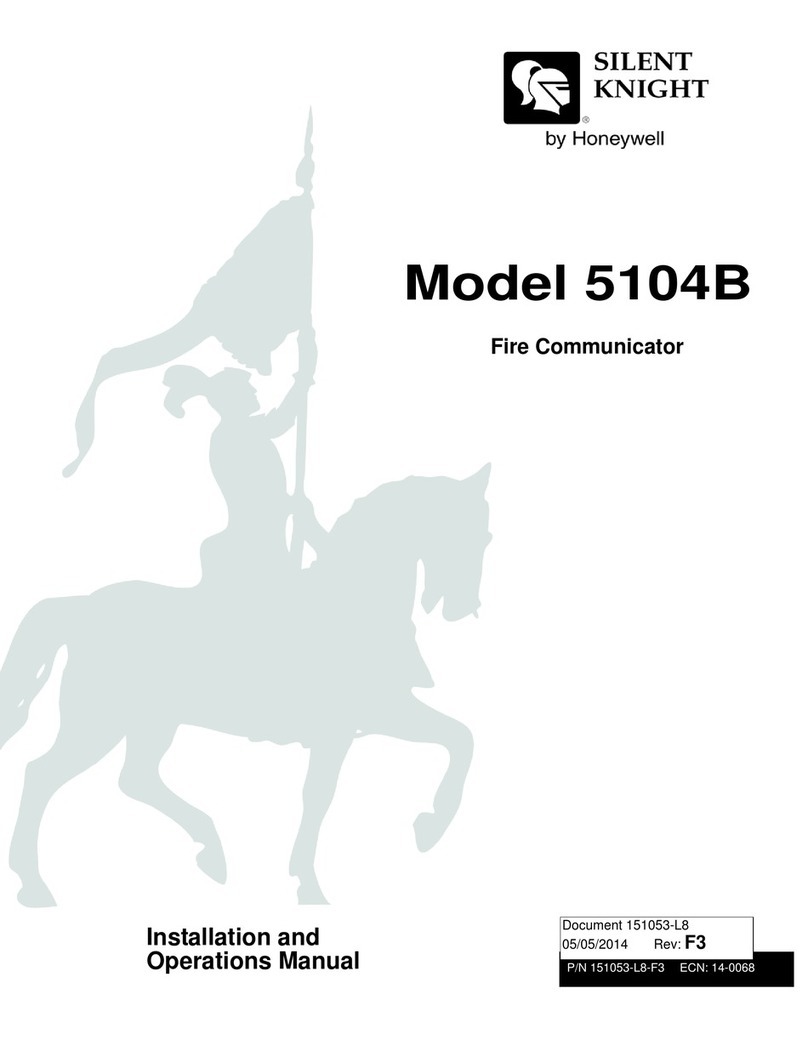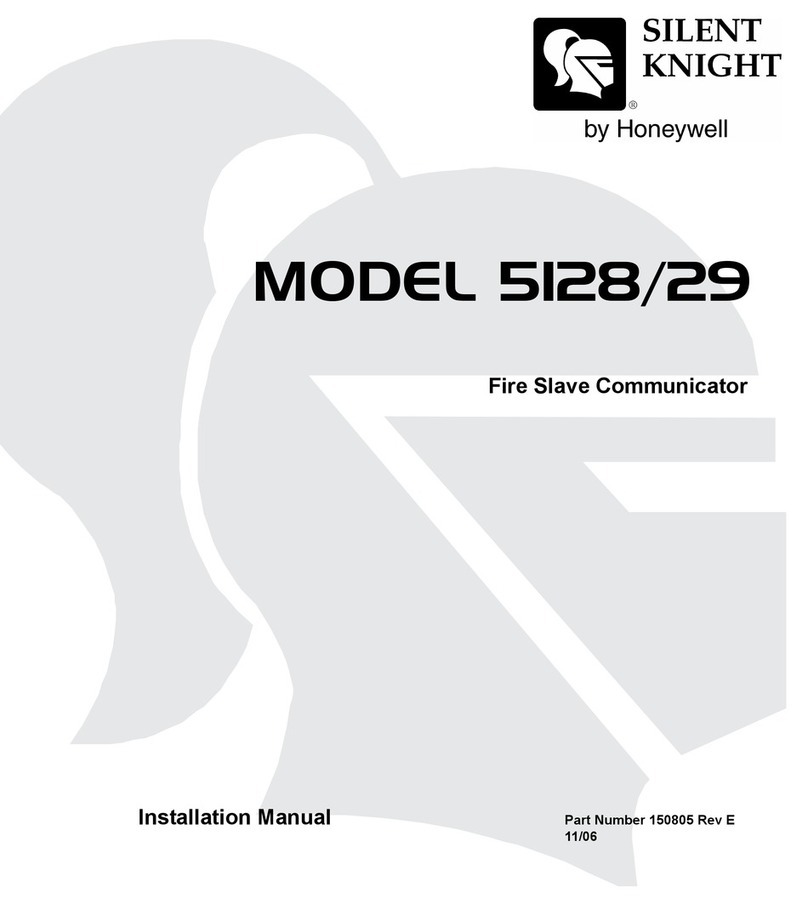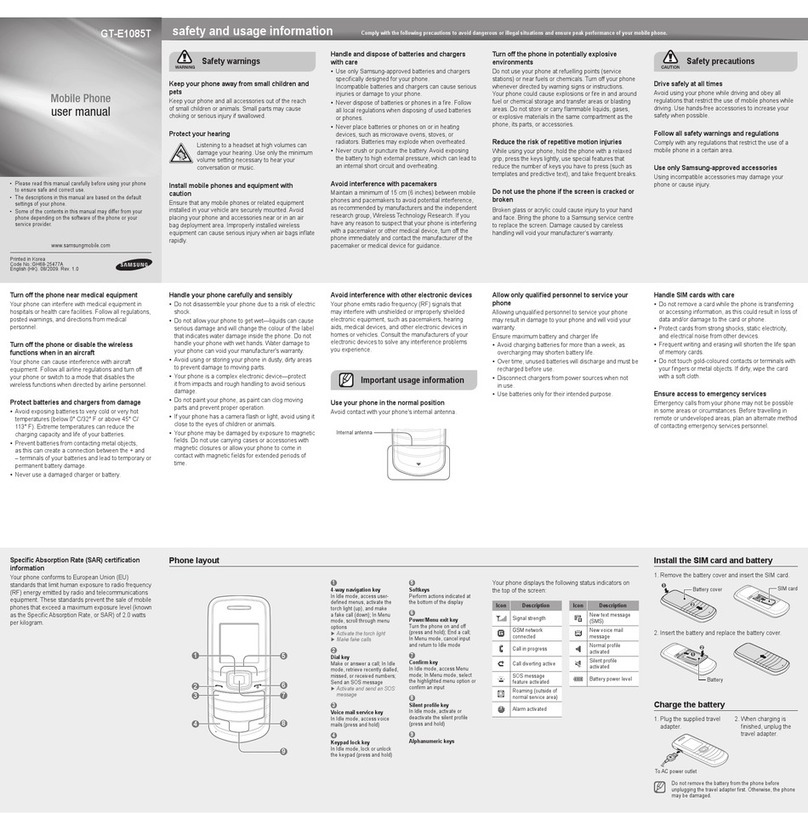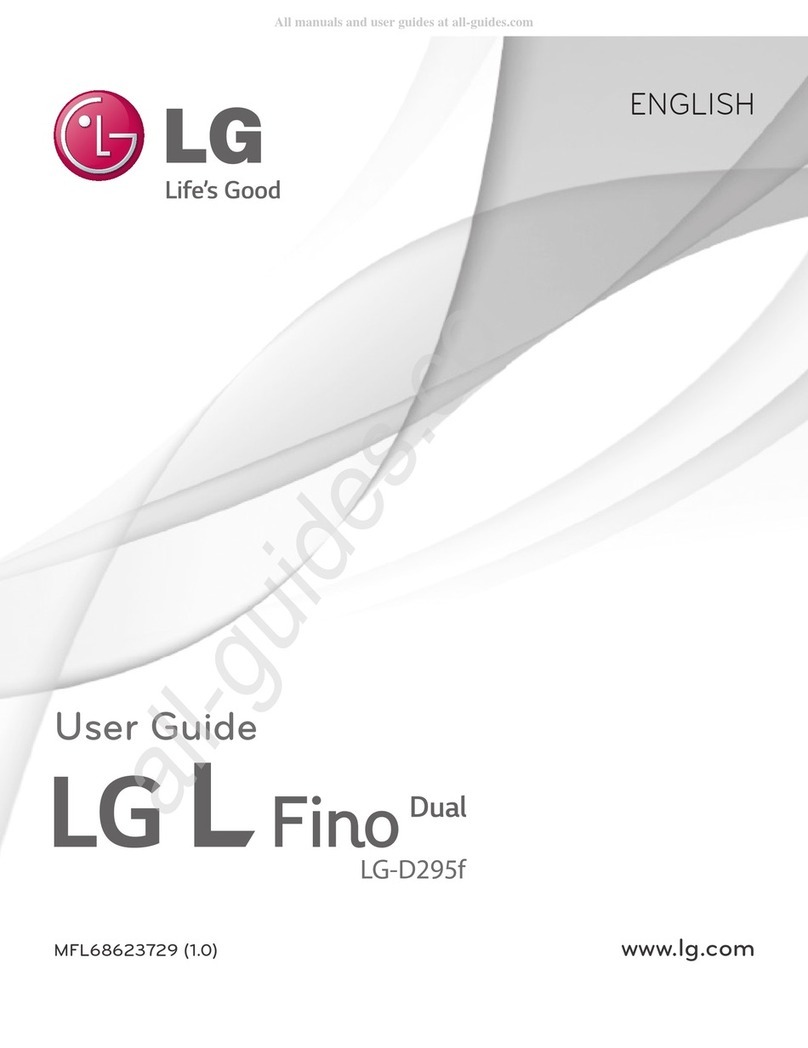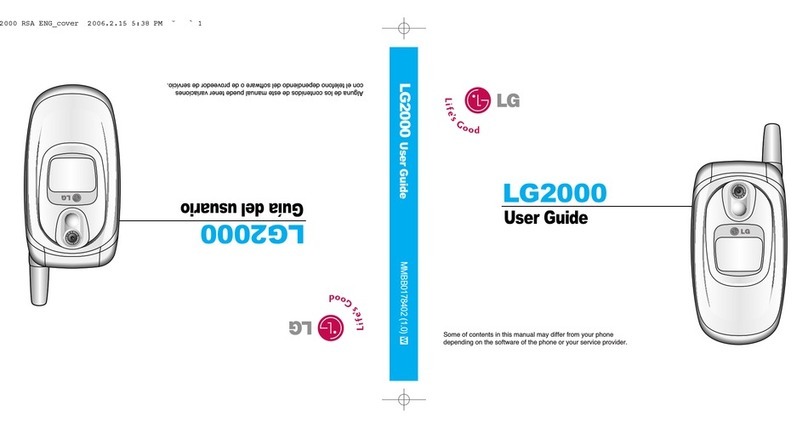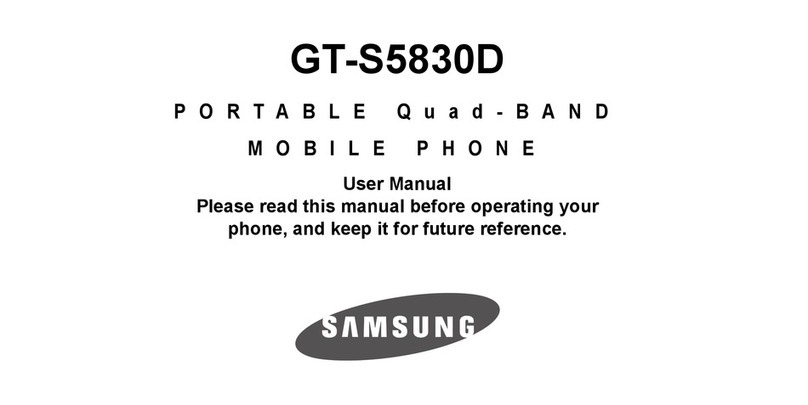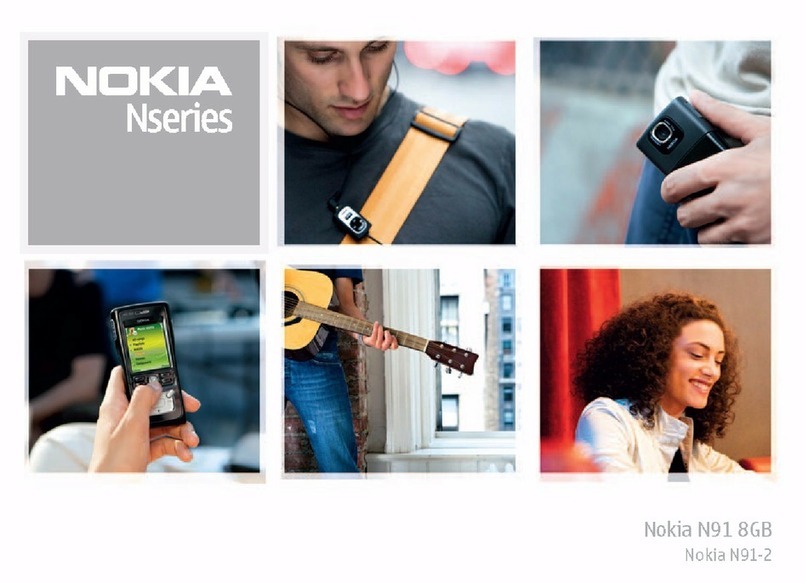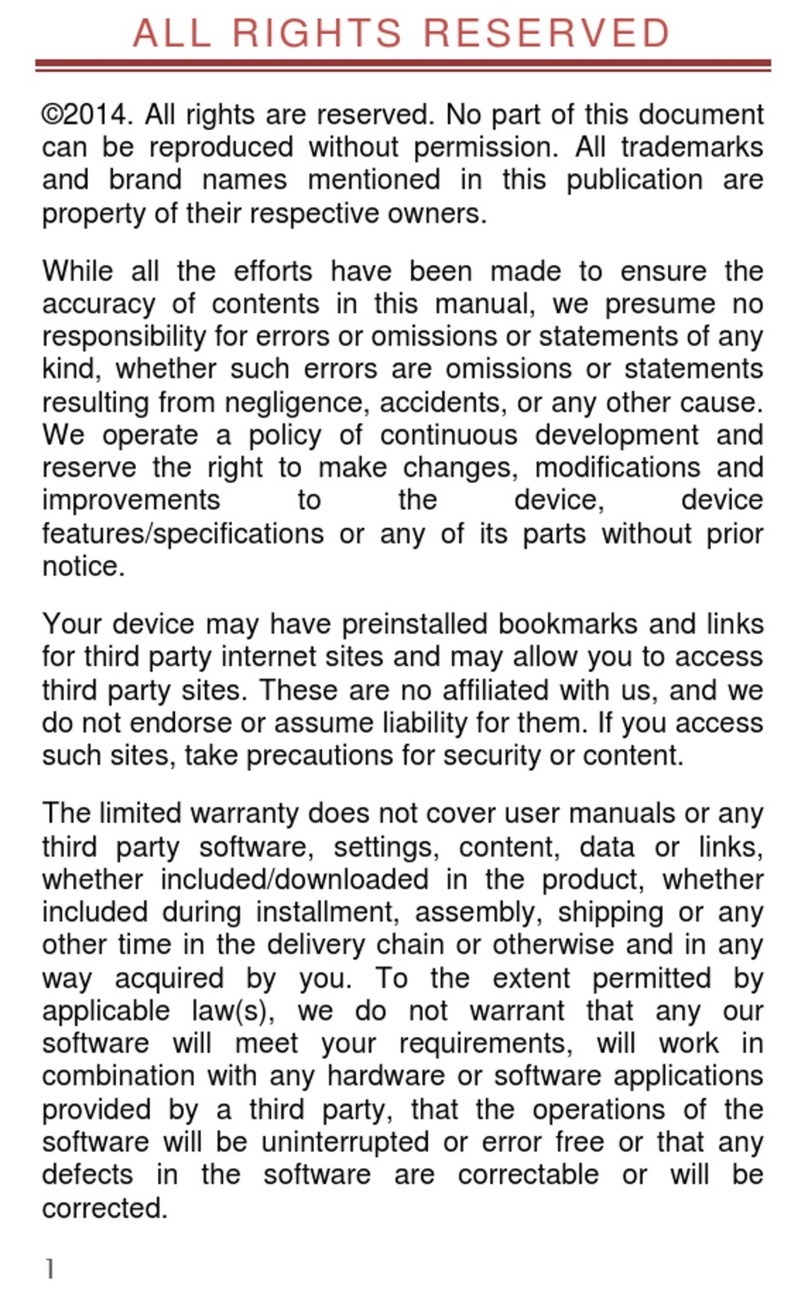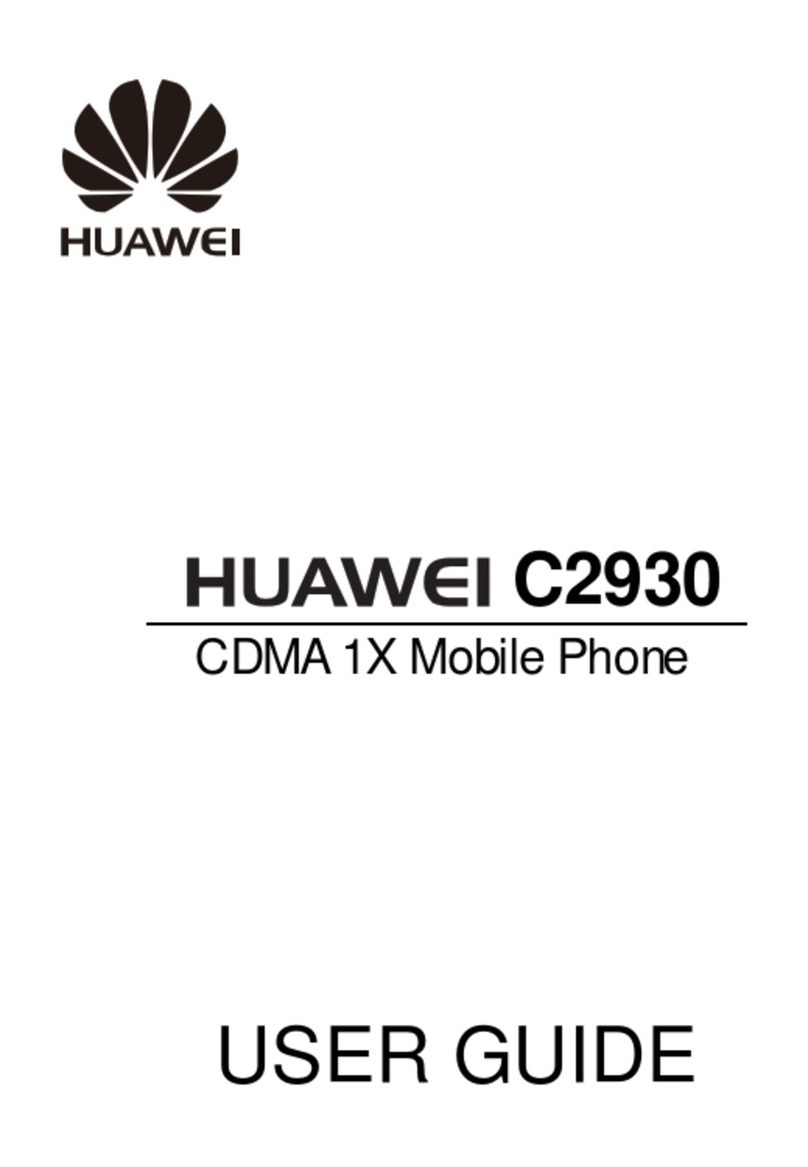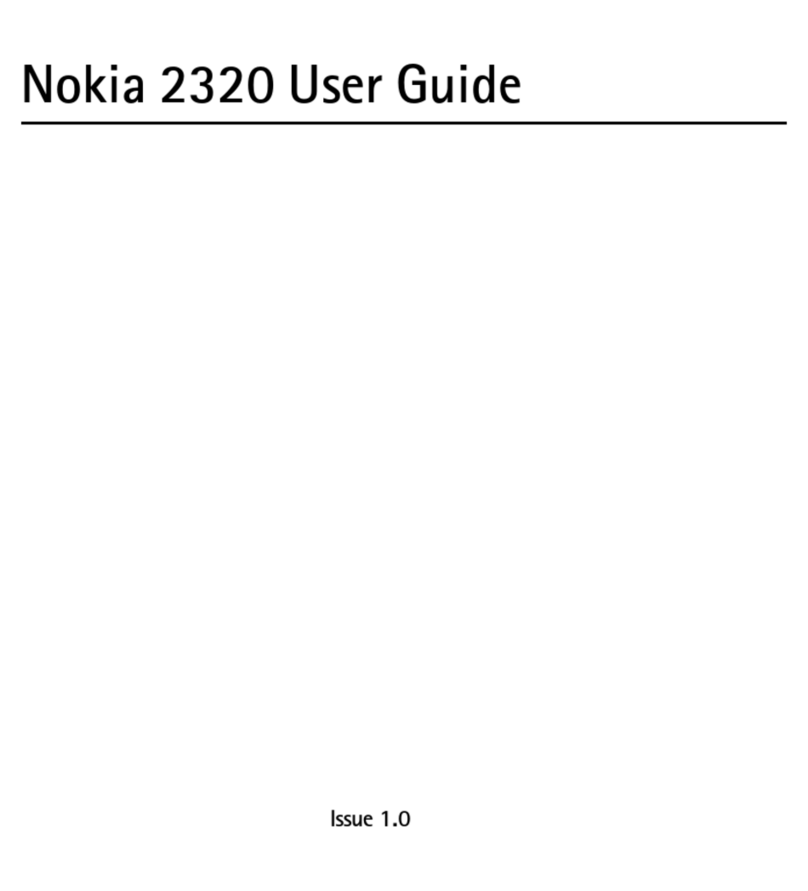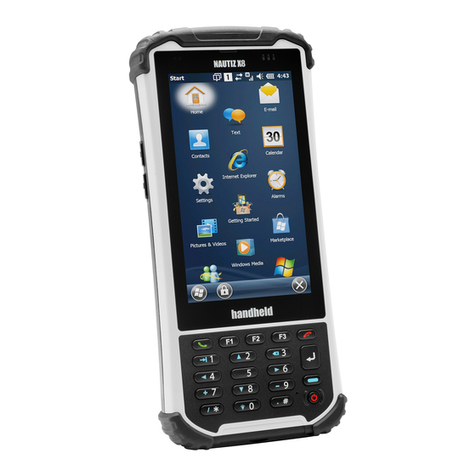SILENT KNIGHT 7181 User manual

151053 i
Content
Section 1
Introduction .............................................................................................................................................. 1-1
1.1 Feature ......................................................................................................................................................1-1
1.2 Accessory Devices ................................................................................................................................... 1-2
1.3 About This Manual .................................................................................................................................. 1-2
1.3.1 How to Use This Manual .................................................................................................................. 1-2
Section 2
Agency Requirements ............................................................................................................... 2-1
2.1 Telephone Requirements .......................................................................................................................... 2-1
2.2 FCC Warning ........................................................................................................................................... 2-2
2.3 UL Requirements ..................................................................................................................................... 2-2
Section 3
Installation ................................................................................................................................................. 3-1
3.1 Electrical Specifications ........................................................................................................................... 3-1
3.2 Environmental Specifications .................................................................................................................. 3-1
3.3 Wiring Specifications ............................................................................................................................... 3-2
3.4 Panel Description .....................................................................................................................................3-3
3.4.1 Terminal Description ........................................................................................................................ 3-4
3.4.2 LED Descriptions ............................................................................................................................. 3-5
3.4.2.1 Externally Visible LEDs (L3, L4, & L5) ...............................................................................3-5
3.4.2.2 Phone Line Fault Indicator LEDs (L6 &L7) .......................................................................... 3-5
3.4.2.3 Overcurrent LED Indicators (L1 & L2) ................................................................................. 3-6
3.4.3 Reset / Silence Switch .......................................................................................................................3-6
3.4.4 Cable Connectors (P1 & P2) ............................................................................................................. 3-7
3.4.5 On-board Piezo Sounder ................................................................................................................... 3-7
3.5 Calculating Current Draw and Standby Battery ...................................................................................... 3-8
3.5.1 Worksheet Requirements .................................................................................................................. 3-8
Fill in the Current Draw Worksheet (Table 3-5) in section 3.5.2. ................................................3-8
3.5.2 Current Draw Worksheet .................................................................................................................. 3-9
3.5.2.1 Maximum Battery Standby Load ......................................................................................... 3-10
3.6 Mounting the 5104 Cabinet ....................................................................................................................3-11
3.7 Battery Connection ................................................................................................................................ 3-11
3.8 Detector Installation ............................................................................................................................... 3-12
3.8.1 Class A (Style D) Zones .................................................................................................................3-12
3.8.2 Class B (Style B) Zones ................................................................................................................. 3-13
3.8.3 Four-Wire Smoke Detector Connection ......................................................................................... 3-14
3.8.4 Connecting the 7181 Zone Converter ............................................................................................. 3-15
3.9 Auxiliary Notification Appliance Installation ........................................................................................ 3-16
3.9.1 Non-Supervised Notification Appliance Wiring ............................................................................ 3-16
3.9.2 Supervised Notification Appliance Wiring ..................................................................................... 3-17

Model 5104B Fire Communicator Installation Manual
ii 151053
3.10 Telephone Line Connections ................................................................................................................. 3-18
3.11 Model 5230 Installation ......................................................................................................................... 3-18
3.11.1 Mounting the 5230 .......................................................................................................................... 3-19
Section 4
Slave Fire Communicator Application ................................................................. 4-1
Section 5
5230 Operation ..................................................................................................................................... 5-1
5.1 5230 Display Messages ............................................................................................................................ 5-1
5.2 5230 Touchpad Functions ........................................................................................................................ 5-2
Section 6
Programming ......................................................................................................................................... 6-1
6.1 5230 Programming ................................................................................................................................... 6-1
6.1.1 Default User Codes ........................................................................................................................... 6-1
6.1.2 How to Enter and Exit Program Mode ............................................................................................. 6-1
6.1.3 How to Enter Program Mode ............................................................................................................ 6-1
6.1.4 How to Exit Program Mode .............................................................................................................. 6-1
6.1.5 Step Programming ............................................................................................................................ 6-2
6.1.6 Maneuvering in Program Mode ........................................................................................................ 6-2
6.1.6.1 Entering Selected Values ....................................................................................................... 6-2
Yes or No Selections ..................................................................................................................... 6-2
Selecting Alpha-numeric characters .............................................................................................. 6-2
Special Character and Functions ................................................................................................... 6-3
6.1.6.2 Bypass a Step ......................................................................................................................... 6-3
6.1.6.3 Go to a Step ............................................................................................................................ 6-3
6.1.7 Programming Steps ........................................................................................................................... 6-4
6.2 Model 5541 Programming ....................................................................................................................... 6-8
Section 7
Reporting ..................................................................................................................................................... 7-1
7.1 Reporting Formats .................................................................................................................................... 7-1
7.2 Reporting Codes ....................................................................................................................................... 7-2
Section 8
Troubleshooting ................................................................................................................................8-1

151053 1-1
Section 1
Introduction
The Model 5104 is a low-cost fire communicator that meets the requirements for NFPA 72,
UL 864, ULC 527, MEA, CSFM, and FM.
1.1 Feature
• Four supervised fire zones, consisting of one Class A (Style D) and three Class B
(Style B) zones.
• Current limited loop power output for the Class B zone inputs.
• Ground fault detection.
• Built-in piezo sounder for trouble and supervisory conditions.
• Reset/Silence switch that performs the following:
1 Silences troubles and alarms.
2 Resets smoke detector power.
3 Resets accessory power.
• Supervision of Reset/Silence switch.
• 24 hour battery backup from a 12 VDC, 6.5 Ah rechargeable battery.
• Separate battery charging circuit that maximizes battery life.
• Multiple reporting formats (SIA, SK 3/1, Sescoa 3/1, Contact ID, SK 4/2, Radionics
BFSK).
• Programmable relay output provides additional annunciation for either alarm or dialer-
failed condition.
• Three LEDs indicating AC power (green) status, Trouble Silenced (yellow), and Dialer
Failed (yellow).
• Four LEDs inside cabinet indicate short circuits and trouble conditions.
• Up- and Downloading with the 5541downloading software.
• Easy, English-language programming using the 5230 Remote Annunciator.
• Versatile two-number dialing feature for reporting to two different numbers.
• Programmable dialing format (rotary or TouchTone).
• Two phone line monitoring and seizure circuits.
• Transient Voltage protection on all inputs (AC, phone lines, accessory zones).
• Automatic daily test.
• EEPROM memory storage of all programmed information.

Model 5104B Fire Communicator Installation Manual
1-2 151053
1.2 Accessory Devices
• Model 5230 Remote Annunciator (optional). Used for system control, programming and
troubleshooting.
• Model 7860 modular cable with spade lugs for connection to Telco RJ31X plug
(optional).
• Model 7181 Universal Zone Converter (optional).
1.3 About This Manual
This manual is intended for those persons involved with the installation and maintenance of
the 5104 Fire Communicator. It is a comprehensive guide providing detailed instructions, and
should be kept for reference. As much as possible, we have tried to organize the manual
chronologically by the tasks that need to be performed. Please let us know if the manual does
not meet your needs in any way.
1.3.1 How to Use This Manual
In this manual, the following conventions are used:
• Pages of the manual are numbered by section. For example, a page numbered as 5-1 is
page 1 of Section 5.
• Text in this type face indicates a 5230 display message: 6\VWHP1RUPDO.

151053 2-1
Section 2
A
g
enc
y
Requirements
This section list all the requirements for the 5104 by agency.
2.1 Telephone Requirements
If requested by telephone company the following information must be provided before
connecting this device to the phone lines:
This device may not be directly connected to coin operated telephones or party line services.
This device cannot be adjusted or repaired in the field. In case of trouble with device, notify
the installing company or Silent Knight for an RMA number and then return it to:
Silent Knight
7550 Meridian Circle
Maple Grove, MN 55369-4927
800-328-0103 or 612-493-6455
If the Model 5104 causes harm to the telephone network, the telephone company will notify
the user in advance that temporary discontinuance of service may be required. If advanced
notice is not practical the telephone company will notify the customer as soon as possible.
You as the user have the right to file a complaint with the Federal Communications
Commission if you believe it is necessary.
The telephone company may make changes in its facilities, equipment, operations, or
procedures that could affect the operation of the equipment. If this happens, the telephone
company will provide advance notice to allow you to make the necessary modifications to
maintain uninterrupted service.
A. Manufacturer: Silent Knight
B. Model Number: 5104B
C. FCC Registration Number: AC698R-17462-AL-E
D. Type of jack (to be installed by the
telephone company): RJ31X
Ringer equivalence: 0.1B

Model 5104B Fire Communicator Installation Manual
2-2 151053
2.2 FCC Warning
2.3 UL Requirements
The 5104 is UL listed as a Control Unit for use in Central Station Fire-Protective Signalling
Systems (UL864, NFPA 72). All UL installations must comply with the following
requirements:
1. The 120 VAC wiring to the 5104 cabinet must be enclosed in conduit.
2. Total standby current must not exceed 275 mA for central station use or 105 mA for
remote station use.
3. Remote station installations must not attach any current drawing devices. This includes
5230 Remote Annunciator.
4. All electrical connections must comply with ratings shown in Section 3.
Warning
This device has been verified to comply with FCC Rules Part 15. Operation is subject to the following conditions:
(1) This device may not cause radio interference, and (2) This device must accept any interference received,
including interference that may cause undesired operation.

151053 3-1
Section 3
Installation
This section contains information necessary to install the 5104 Fire Communicator and
accessories.
3.1 Electrical Specifications
3.2 Environmental Specifications
It is important to protect the 5104 panel from water. To prevent water damage, the following
conditions should be AVOIDED when mounting the unit:
• Do not mount directly on exterior walls, especially masonry walls (condensation).
• Do not mount directly on exterior walls below grade (condensation).
• Protect from plumbing leaks.
• Protect from splash caused by sprinkler system inspection ports.
• Do not mount in areas with humidity-generating equipment (such as dryers, production
machinery, etc.).
• Operating temperature range is 32° to 120° F (0° to 49° C).
• Indoor use only.
• 10% to 85% non-condensing humidity at 30°C (86°F).
• Non-corrosive environment.
Primary AC 120 Vrms @ 60Hz, 450 mA rms
Total DC load 1.3 Amp
Accessory Power 12 VDC @ 750 mA
Phone Line Voltage 2.75 VDC min.
Smoke Power 12 VDC @ 750 mA
Battery Charging Voltage 13.8 VDC
Minimum Low Battery Detection 10.2 VDC
Minimum Low AC Detection 102 Vrms @ 60 Hz, full load
Auxiliary Notification Appliance Circuit 12 VDC @ 750 mA

Model 5104B Fire Communicator Installation Manual
3-2 151053
3.3 Wiring Specifications
Induced noise (transfer of electrical energy from one wire to another) can interfere with
telephone communication or even cause false alarms. To avoid induced noise, follow these
guidelines:
• Isolate input wiring from high current output and power wiring. Do not pull one multi-
conductor cable for the entire panel. Instead, separate the wiring as follows:
• Do Not pull wires from different groups through the same conduit. If you must run them
together, do so for as short a distance as possible or use shielded cable. Connect the shield
to earth ground at the panel only.
• High frequency noise, such as that produced by the inductive reactance of a speaker or
bell, can also be reduced by running the wire through ferrite shield beads or by wrapping it
around a ferrite toroid.
• Route the wiring around the inside perimeter of the cabinet. It should not cross the circuit
board where it could induce noise into the sensitive microelectronics of pick up unwanted
RF noise from the high speed circuits. See Figure 3-1 for an example.
Figure 3-1 Wire Routing Example
High Voltage AC Power
Audio input/output Phone Line Circuits, Terminals 13-20
Notification Circuits Terminals 21-22
Data Communication Circuits Terminals 25-26

Installation
151053 3-3
3.4 Panel Description
This section describes the 5104 board components, including terminal strips, LEDs, Switches
and cable connectors. See Figure 3-2.
Figure 3-2 5104 Circuit Board
Terminal
Block 1
Terminal
Block 3
Terminal
Block 2
P1
P2
L3
L4
L5 L7
L6 L1
L2 Reset/
Silence
Switch

Model 5104B Fire Communicator Installation Manual
3-4 151053
3.4.1 Terminal Description
Table 3-1 lists the terminals by number and describes the terminals use.
Table 3-1: Terminal Description by Terminal Block
Terminal
Block # Terminal # Description Electrical Specification
1
1Loop A output (Class A Style D)
Zone 1
(Power Limited)
2Loop B output
3Loop B input
4 Loop A input
5 Input (Class B Style A) Zone 2
6 Power (Power Limited)
7 Circuit Ground
8Input (Class B Style A) Zone 3
9 Power (Power Limited)
10 Input (Class B Style A)
Zone 411 Power (Power Limited)
12 Circuit Ground
2
13 Telco Ring
Phone Line 1
14 Telco Tip
15 House Ring
16 House Tip
17 Telco Ring
Phone Line 2
18 Telco Tip
19 House Ring
20 House Tip
21 Bell (+) positive Notification
Circuit (Power Limited)
22 Bell (-) negative
3
23 Ground 5230
Annunciator
(Optional)
24 Accessory Power (Power Limited)
25 Serial Data Out (Power Limited)
26 Serial Data In

Installation
151053 3-5
3.4.2 LED Descriptions
This section describes what each LED indicates. The 5104 has a total of seven LEDs, three are
visible externally and four are visible only if the cabinet door is open. See Section 8 for
additional information on LED operation.
3.4.2.1 Externally Visible LEDs (L3, L4, & L5)
This section describes the three LEDs (one green and two yellow) that are visible externally
through the window on the 5104 cabinet door. Refer to Table 3-2 and Figure 3-2.
3.4.2.2 Phone Line Fault Indicator LEDs (L6 &L7)
The 5104 has a built-in dual-phone line monitoring circuit. This circuit detects any fault in the
phone line by monitoring the loop current and DC voltage. If the phone line drops to 1.8 VDC
@ 5 mA or below for 40 to 90 seconds the on-board piezo and the corresponding LED will
turn ON. The control panel will then report the fault condition to the central station on the
other phone line. For example, if phone line one looses phone line voltage, the on-board piezo
and the L6 will turn on, then the control panel will report the faulted line on phone line two.
See Figure 3-2 for LED Locations
Note: To comply with NFPA 72 the model 5104 is equipped with phone line seizure. This means that any time the
control panel dialer needs to communicate with the central station, it will not be possible to use the tele-
phones that are on the same line as the fire system. During communication to the central station the phone
lines will be seized for approximately one minute. However, under adverse telephone circuit conditions
phone line seizure could last as long as 15 minutes.
Table 3-2: Externally Visible LEDs
LED # Name Color Description
L3 Power Green Normally ON unless the panel loses AC power or the panel is being
reset.
L4 Silenced Yellow Normally OFF unless a trouble or supervisory condition has been
silenced.
L5 Dialer Yellow Normally OFF unless there is a phone line or communication
problem. See Section 3.4.2.2 for additional information.
Table 3-3: Phone Line Fault Indicator LEDs
LED # Name Color Description
L6 Phone Line 1 Fault Red
Visible only when the 5104 cabinet is open. If ON indicates that
phone line 1 is faulted. A faulted condition is indicated if the phone
line voltage drops below 1.8 VDC and the loop current is less than 5
mA. Flashing indicates a communication error has occurred.
L7 Phone Line 2 Fault Red
Visible only when the 5104 cabinet is open. If ON indicates that
phone line 2 is faulted. A faulted condition is indicated if the phone
line voltage drops below 1.8 VDC and the loop current is less than 5
mA. Flashing indicates a communication error has occurred.

Model 5104B Fire Communicator Installation Manual
3-6 151053
3.4.2.3 Overcurrent LED Indicators (L1 & L2)
The 5104 has two red LEDs which indicate if excessive current is being drawn by a device
connected to either the Accessory Power or Smoke Power circuits. Table 3-4 lists the two
overcurrent LEDs and gives a description of them. See Figure 3-2 for LED locations.
If either L1 or L2 turn on disconnect power immediately. Refer to Section 8 for
troubleshooting information.
3.4.3 Reset / Silence Switch
The Reset/Silence switch can be accessed from the outside of the cabinet. The Reset/Silence
switch extends from a hole located on the right side of the control panel cabinet. The Reset/
Silence switch has three functions.
The functions of the Reset/Silence switch are as follows:
• It silences audible alarm, trouble, or supervisory signals.
A trouble or supervisory annunciation and alarm bell will be silenced immediately when
you press the switch. An alarm annunciation on the 5230 cannot be silenced until the
alarm condition has been restored.
• Reset smoke detector power.
This function removes power from terminals 6, 9 and 11.
Note: To reset smoke detectors power depress the reset /trouble switch for a minimum of 1 second.
• Reset accessory powered devices.
This function removes power from terminal 24.
Note: To reset accessory powered devices depress the reset/silence switch for a minimum of 1 second.
Table 3-4: Overcurrent LED Description
LED # Name Color Description
L1 Accessory Power Fault Red If a device connected to the accessory power circuit draws more than
750 mA the overcurrent poly fuse will open and L1 will turn on.
L2 Smoke Power Fault Red If a device connected to the smoke power circuit draws more than
750 mA the overcurrent poly fuse will open and L2 will turn on.

Installation
151053 3-7
3.4.4 Cable Connectors (P1 & P2)
There are two connectors on the 5104 (see Figure 3-2 for P1 and P2 locations). The function
of these connectors is as follows:
3.4.5 On-board Piezo Sounder
The on-board piezo sounder gives an audible output for trouble, and supervisory conditions.
Troubles and supervisories can be silenced with the Reset/Silence switch immediately.
Connector Function
P1 Connects the wires from the secondary winding of the AC transformer to the
control panel. (See Section 8 Troubleshooting for additional information.
P2 Used as a quick-connect for the 5230 Remote Annunciator to do programming
or troubleshooting.

Model 5104B Fire Communicator Installation Manual
3-8 151053
3.5 Calculating Current Draw and Standby Battery
This section should be used to help you determine the current draw and standby battery needs
for your installation.
3.5.1 Worksheet Requirements
The following steps must be taken when determining the 5104 current draw and standby
battery requirements.
Fill in the Current Draw Worksheet (Table 3-5) in section 3.5.2.
For the 5104, the worst case current draw is listed in Table 3-5 for the panel and accessory
devices.
Follow these steps to properly fill in the Current Draw Worksheet.
1. Fill in the number of devices used.
2. Compute the current draw requirements for alarm and standby and record this data into
line A.
3. Add up the current draw for all the smoke detectors and record the totals in line B.
4. Total all the notification appliance device loads and enter that number into line C.
5. Make sure that the alarm current you calculated, including current for the panel itself, does
not exceed 750 mA. This is the maximum current allowable.
6. Complete the remaining instructions in Table 3-5 to determine battery size requirements.

Installation
151053 3-9
3.5.2 Current Draw Worksheet
Use this worksheet to determine current requirements during alarm/battery standby operation.
Table 3-5: Current Draw Calculations
Device Number of
Devices Current per Device Standby
Current Alarm
Current
For each device use this formula: This Column x This Column = Current per number of devices
5104 1 Standby: 50 mA 50 mA
Alarm: 135 mA 135 mA
5230 3 max Standby: 60 mA mA
Alarm: 120 mA mA
7181 (2max.) by configuration
4-wire to 2-wire Standby: 38 mA mA
Alarm: 61 mA mA
Class A Style D
to
Class B Style B
Standby: 38 mA mA
Alarm: 176 mA mA
Class B Style B
to
Class A Style D
Standby: 52 mA mA
Alarm: 90 mA mA
A Current Subtotals: mA mA
Smoke Detectors Refer to device manual for current rating. See Appendix for compatible devices.
Standby: mA mA
Alarm: mA mA
Standby: mA mA
Alarm: mA mA
Standby: mA mA
Alarm: mA mA
Standby: mA mA
Alarm: mA mA
B Current Subtotals: mA mA
Notification Appliances Refer to device manual for current rating. See Appendix for compatible devices.
mA
mA
mA
mA
mA
C Current Subtotals: mA mA
DTotal current rating of all devices in system (add totals of A-C): mA mA
ENumber of standby hours. (24 or 60 for NFPA 72, chapter 1, 1-5.2.5): H
FMultiply lines D and E. Total standby mAH mAH
GAlarm sounding period in hours. (For example, 5 minutes = .0833 hours) H
HMultiply lines D and G totals Total alarm AH AH
IAdd lines F and H. AH = Ampere Hours Total AH required AH

Model 5104B Fire Communicator Installation Manual
3-10 151053
3.5.2.1 Maximum Battery Standby Load
Table 3-6 shows the maximum battery standby load for the 5104 based on 24 and 60 hours of
standby. the standby load calculations of line F in Table 3-5 must be less than the number
shown in Table 3-6 for the battery size used and standby hours required.
Table 3-6: maximum Battery Standby Load
Rechargeable Battery
Size
Maximum Load for 24
hrs. Standby, 5 min.
Alarm
Maximum Load for 60
hrs. Standby, 5 min.
Alarm
7 AH 275 mA 105 mA

Installation
151053 3-11
3.6 Mounting the 5104 Cabinet
Read the environmental specifications in Section 3.2 before mounting the 5104 cabinet. This
will ensure that you select a suitable location.
The panel should be accessible to main drop wiring runs. It should be mounted as close to the
center of the building as possible and located within a secured area, but should be accessible
for testing and service.
Mount the 5104 so it is firmly secured to the wall surface. When mounting on concrete,
especially when moisture is expected, attach a piece of 3/4 inch plywood to the concrete
surface and then mount the 5104 to the plywood. Also mount any other modules to the
plywood.
3.7 Battery Connection
The battery provides backup power to the system during AC power loss. Connect the 12 VDC
battery (Model 6712) as shown in Figure 3-3.
Figure 3-3 Backup Battery Connections
Note: Observe proper polarity when connecting the 12 VDC battery to 5104. If polarity is reversed, a resettable
overcurrent protection device on the 5104 will automatically open removing power from the panel.

Model 5104B Fire Communicator Installation Manual
3-12 151053
3.8 Detector Installation
3.8.1 Class A (Style D) Zones
Zones 1 is for a class A (style D) zone. It is intended for use with non-powered devices such as
waterflow switches. Do NOT use smoke or duct detectors on Class A zones.
Each class A zone is a four-wire circuit that allows an alarm to be detected even after a single
open or ground fault occurs. When a single open or ground fault occurs, the audible trouble
signal will sound and the 5104 will report the trouble to the central station.
Figure 3-4 shows how to wire a class A (style D) loop. No end-of-line (EOL) resistor is
needed for this zone. This zone must be wired using normally open contacts.
Figure 3-4 Class A (style D) Supervised Fire Loop
(Normally Open Sensors Only)
Note: Class A wiring is to be used for dry contacts only and does not support 2-wire detectors.

Installation
151053 3-13
3.8.2 Class B (Style B) Zones
Zones 2 through 4 are class B (style B) fire zones. Each class B zone consists of a two-wire
circuit that will detect the occurrence of an open in the loop, but may not be able to detect an
alarm after such an occurrence. The detection of an open will cause the audible trouble signal
to sound and the 5104 will report the trouble to the central station.
Figure 3-5 shows how to wire a class B (style B) loop. One side of each class B loop connects
to a zone input terminal and the other side of each loop connects to loop power. For each loop,
use a 4.7K-ohm EOL resistor wired in parallel with the normally open contact farthest from
the panel.
Figure 3-5 Model 5104B Class B (Style B) Loops
Note: Does not support 2-wire detectors.
Maximum Loop Resistance - 50 ohms
Maximum Total alarm current for all class B (Style B) zones - 750 mA
Maximum Standby Current per Zone:
Output (loop power) 750 mA
Input 0.5 mA
Note: UL requires all wiring to be at least 18 gauge.
Model 7628
4.7 KΩEOL

Model 5104B Fire Communicator Installation Manual
3-14 151053
3.8.3 Four-Wire Smoke Detector Connection
4-wire smoke detectors must use a power supervision module. Connect four-wire smoke
detectors as shown in Figure 3-6.
Figure 3-6 4-wire Smoke Detector Connections
Model 160150
Supervision
Module
Model 7628
EOL Resistor
ESL 449CT
This manual suits for next models
1
Table of contents
Other SILENT KNIGHT Cell Phone manuals
